Autumn plants: 18 best plants to add colour to your autumn garden
Choose the right autumn plants that really pack a colourful autumnal punch - with fiery foliage of deep reds to yellows, a jewel box of berries, plus vibrant flowers

The range of autumn plants to add colour to your seasonal garden is vast. As deciduous trees and shrubs change their leaves, a gorgeous palette of crimson, russet, bronze and gold emerges. But you can also create beautiful interest with the right pick of shrubs and plants for autumn colour - including foliage, berries, seedheads and flowers. All it takes is a bit of planning.
For more garden ideas, visit our dedicated page.
Why leaves change colour

This beautiful phenomenon is caused by deciduous plants slowing their metabolism. The chlorophyll content of leaves aids photosynthesis and keeps them green through spring and summer. Shorter days and cooler temperatures trigger a gradual reduction in chlorophyll production, and this ceases to mask the other colour pigments present in the foliage.
The plants prepare for winter when they will live off the food they stored during summer. Plants use this time to recycle nutrients from the foliage and deposit hard-to-eliminate waste products inside the leaves before they are finally shed.
For an instant fix of plants for autumn colour, refresh tired flowerbeds by planting a selection of late-blooming perennials. Gaps in the border could also be filled by dropping in potted plants. Autumnal warm tones work with garden plants for autumn in deep pinks, cerise and purples. Throw in some deep blues to add contrast or add in creams and lime to lighten and calm the effect.
More unusual options, such as ornamental cabbages, can tolerate freezing conditions and actually improve in colour once they have experienced a few frosts. Consider, too, mixing in some edibles with the ornamentals, such as Swiss chard, kale and mustard
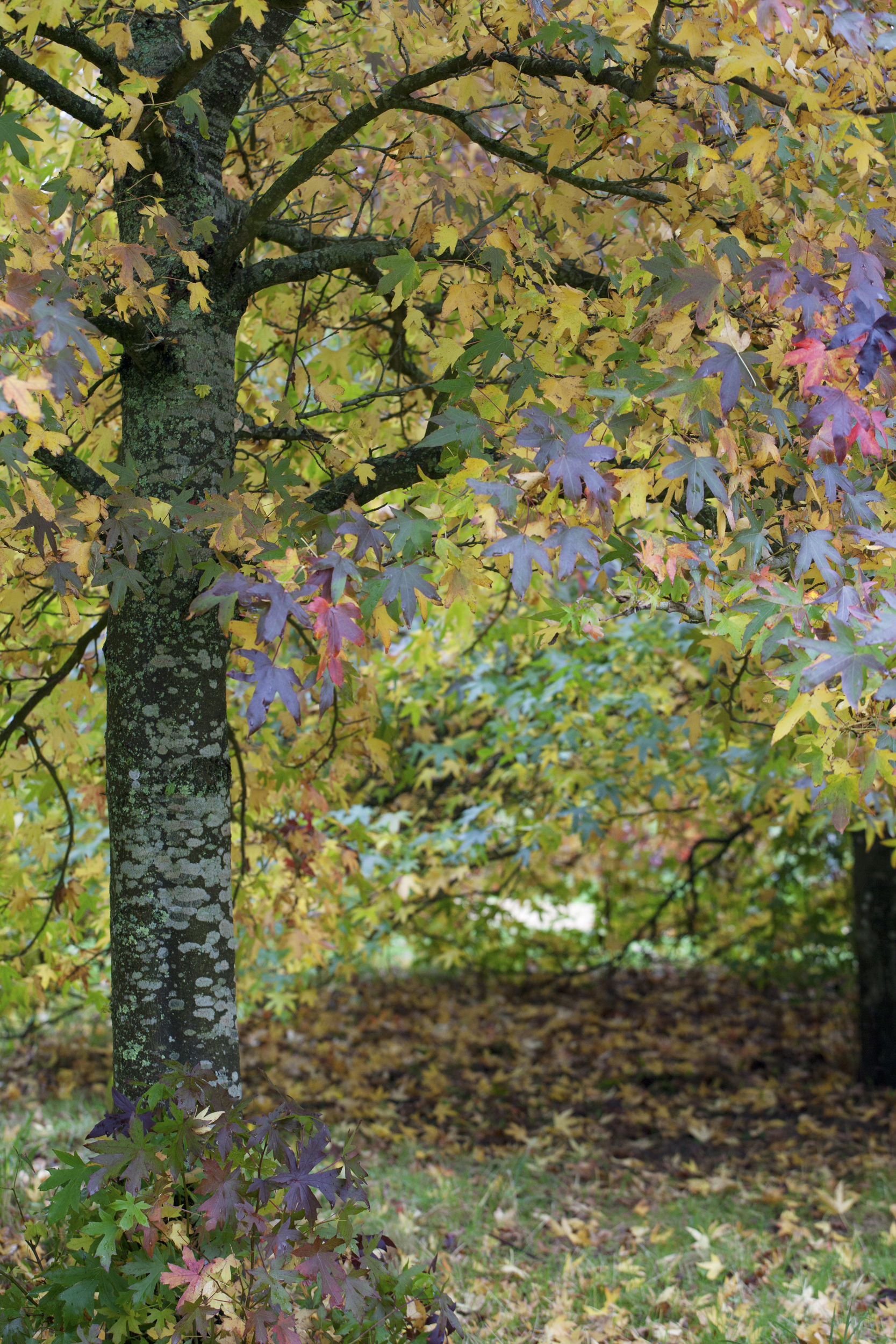
Trees and shrubs for autumn
Do not underestimate the role trees and shrubs play in an autumn garden. There is a wealth of possibilities for including a mix of evergreens and deciduous options, with flowers, foliage colours, berries and bark highlights for autumn colour.
Envisioning the mature height and spread of trees and shrubs, and how they relate to other autumn plants, needs thought as you are planting your canvas for both now and the future. Look at the different shapes, both in the summer and the skeletal forms – if deciduous – in winter, the colour of foliage and bark, or seasonal burst of flowers and berries.
Combine the right planting with essential maintenance tasks - find out how to keep your autumn garden looking its best.
Get small space home decor ideas, celeb inspiration, DIY tips and more, straight to your inbox!
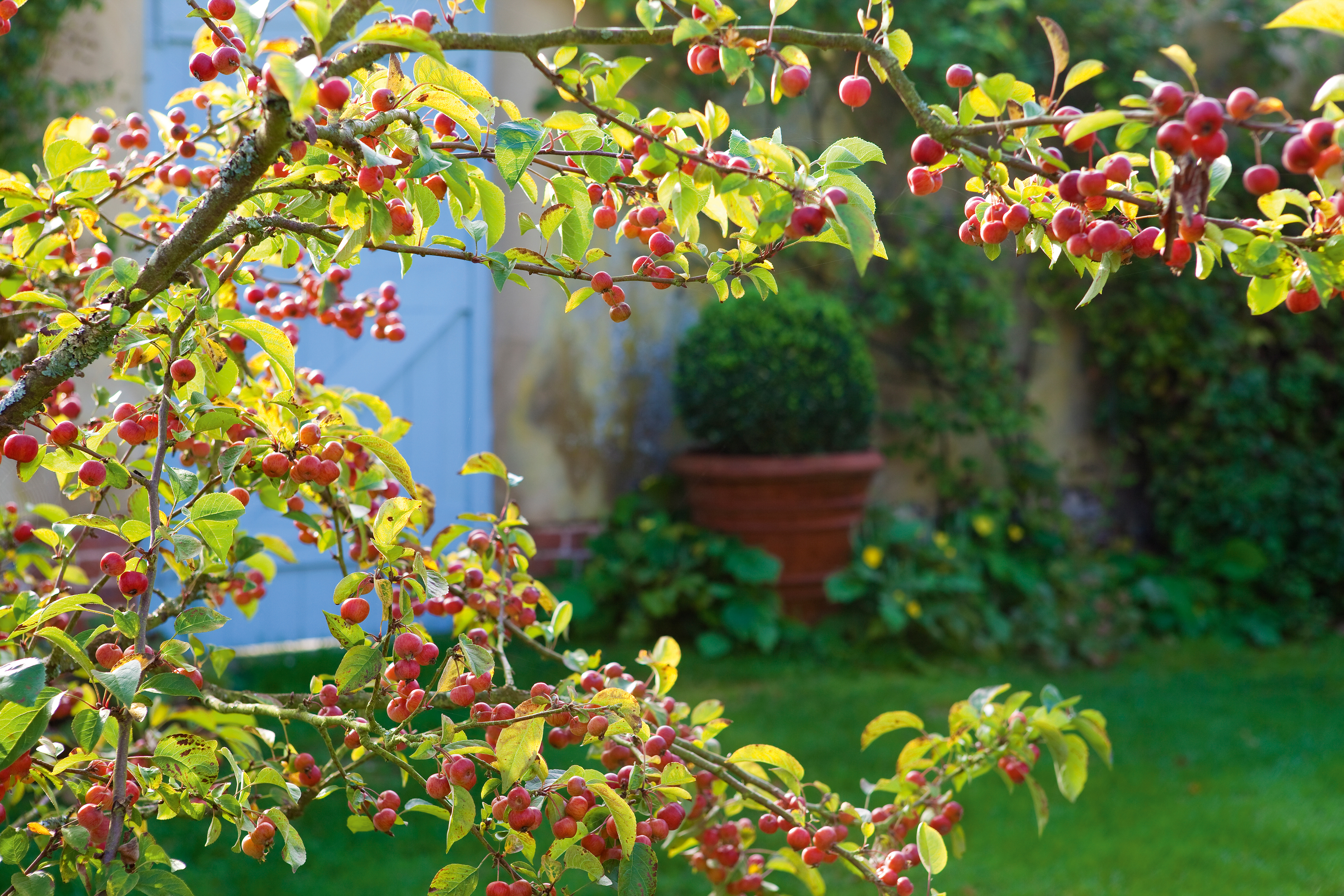
Crab apple trees produce pretty flowers in spring that open from scarlet buds, and then fad to these glossy fruits
Fruiting plants for colour and wildlife
Hardy fruiting plant for autumn colour also continue the show in the garden, with their bright berries in golds, oranges, reds and pinks, hanging like mini baubles on stems.
Autumn is an ideal time to plant trees and shrubs, including those that produce these jewel brights of autumn and winter. They will keep the life going in your garden by attracting a wide variety of fruit-eating birds and other wildlife.
Find ideas for berried plants to add winter interest in your garden too.
Merry berry tips
1. Try to buy self-fertile varieties of plants with berries, or ensure that you have male and several female plants in reasonable proximity to each other.
2. Check the plant sex as names can be misleading; for example Holly ‘Golden King’ is actually a female berrier, and ‘Silver Queen’ is a male pollinator.
3. Keep pruning of woody plants with berries at a minimum to avoid removing berries or developing flower buds.
4. To ensure a good shape, train an open structure early in the plant’s development.
5. Cut native berry-rich hedges, such as holly and blackthorn, on a rotational basis, one side one year, wait a year, then the other side, to ensure there will always be a good crop of berries for the wildlife.
6. Plant berry-rich shrubs with asters, helianthus and grasses.
7. You can pick berry-laden branches for indoor floral arrangements.
Black and red berries are dominant, probably evolving to be as conspicuous as possible to foraging birds in order to have their seed dispersed. Most berry-producing trees and shrubs are easy to grow, don’t need much pruning and tolerate a range of soils and climatic conditions, including frost, wind and drought.
There are choices for both large and small gardens, so it is worth doing a bit of research and visiting local garden centres to see what is on offer. If you have a tiny garden, the best way to introduce berries may be to select ones that can be trained or espaliered against a wall or as a boundary hedge, such as pyracantha or cotoneaster, spindle, sloe or a climbing rose that produces hips.
For a larger space, it is hard not to love the beauty of the spring flowers and autumn fruit of the crab apples; there are even small varieties for containers. Don’t overlook the evergreens, such as holly; you can clip them as topiary for the tiniest space.
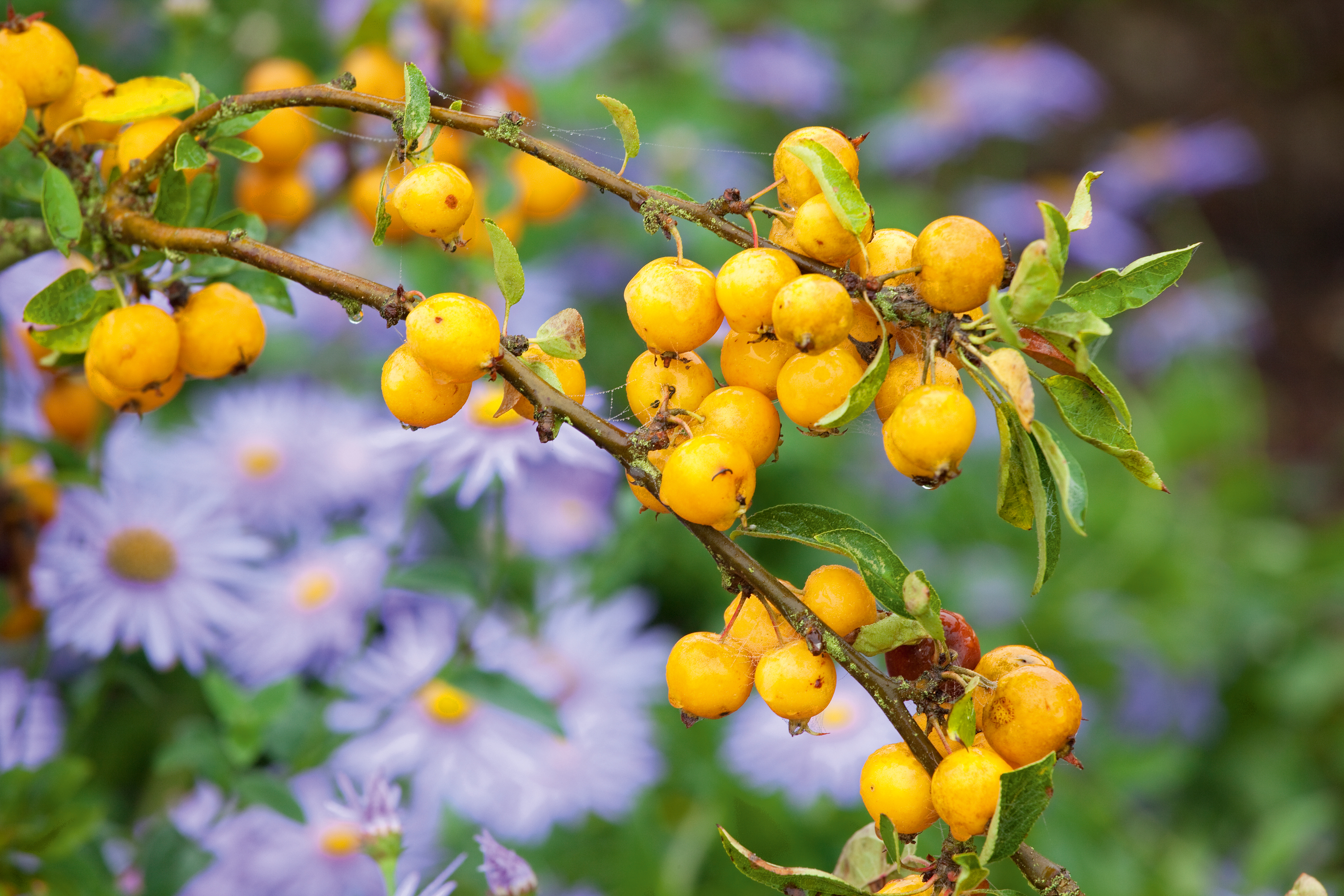
Lilac asters and yellow Malus x zumi ‘Golden Hornet’ make such a pretty combination for autumn
Autumn containers
If you don’t have the space for adding trees and shrubs, you can still enjoy some autumnal beauty on a small scale by creating seasonal containers.
MORE FROM PERIOD LIVING

Period Living is the UK's best-selling period homes magazine. Get inspiration, ideas and advice straight to your door every month with a subscription.
By opting for plant choices that will last through winter, with the added surprise of early bulbs, you’ll have interest all the way to spring. You can also punctuate key areas in the garden as focal points, such as against winter evergreen structure or grouped by steps.
Focus on combinations that add instant colour and hold their look for months. Use frost-resistant containers; placing a plastic pot inside a terracotta pot avoids it cracking. Ensure that your pot has drainage holes and is large enough for your chosen plants. A visit to your local garden centre will offer all kinds of inspiration.
Choose a centrepiece plant, then create a combination on the ground, painting a picture of colours and textures that appeals to you.
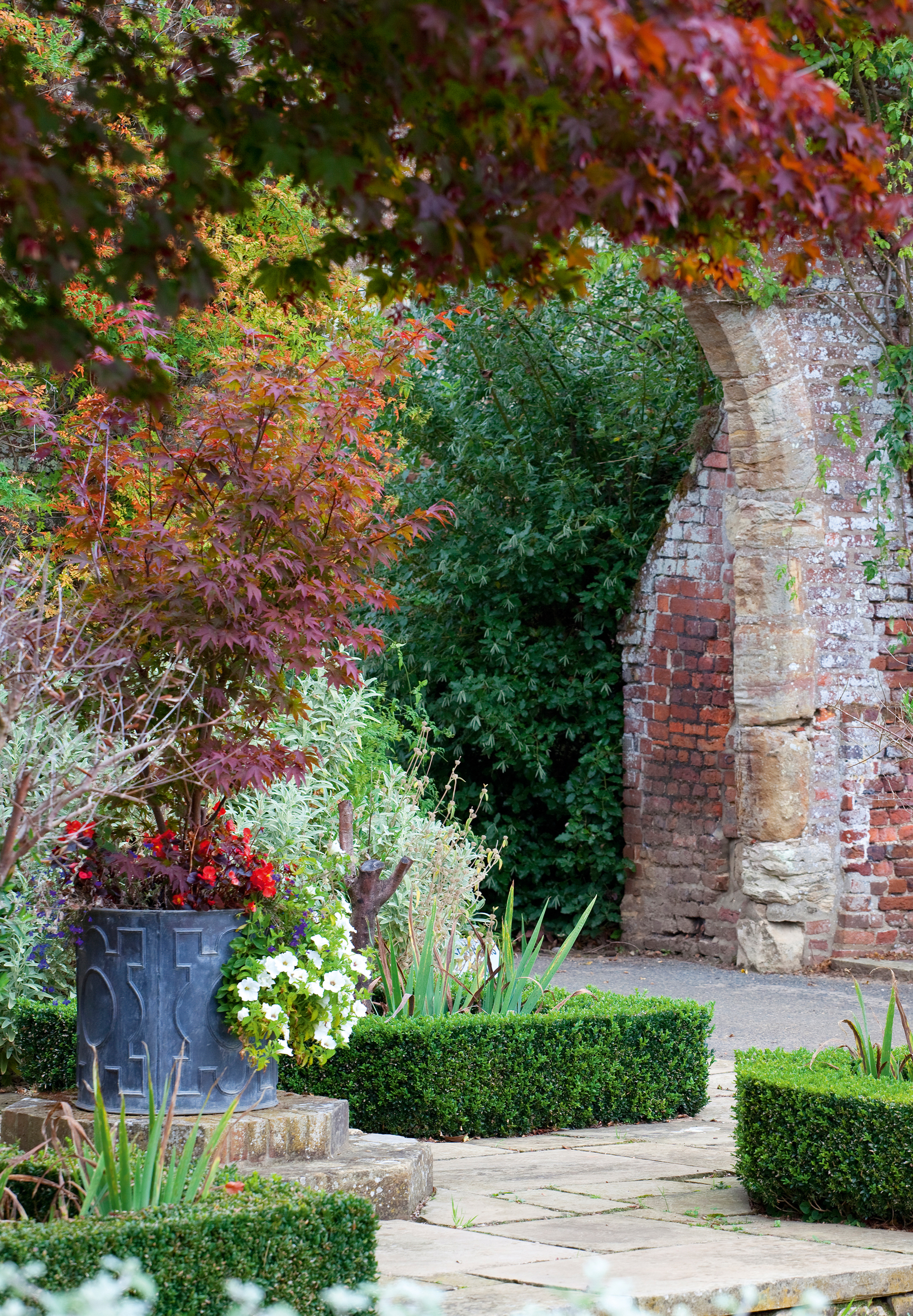
An acer planted in this zinc planter makes a lovely focal point in this autumn garden
Planting tips
- The best time to plant trees and shrubs is between November and March. Planting before Christmas allows them to establish better as the soil is warmer.
- Bare-root plants are only available from mid November to mid April, as at this time they are dormant and can be safely transplanted - they need to be pre-ordered.
- Check the plant’s mature size is suitable for your space and consider mature shape, too – some are broad, some narrow.
- Conifers and other evergreens can act as a foil, increasing the impact of colours from plants and flowers.
- Many of the best plants for autumn leaf colour prefer acidic soils.
- Check the plant’s aspect and soil needs.
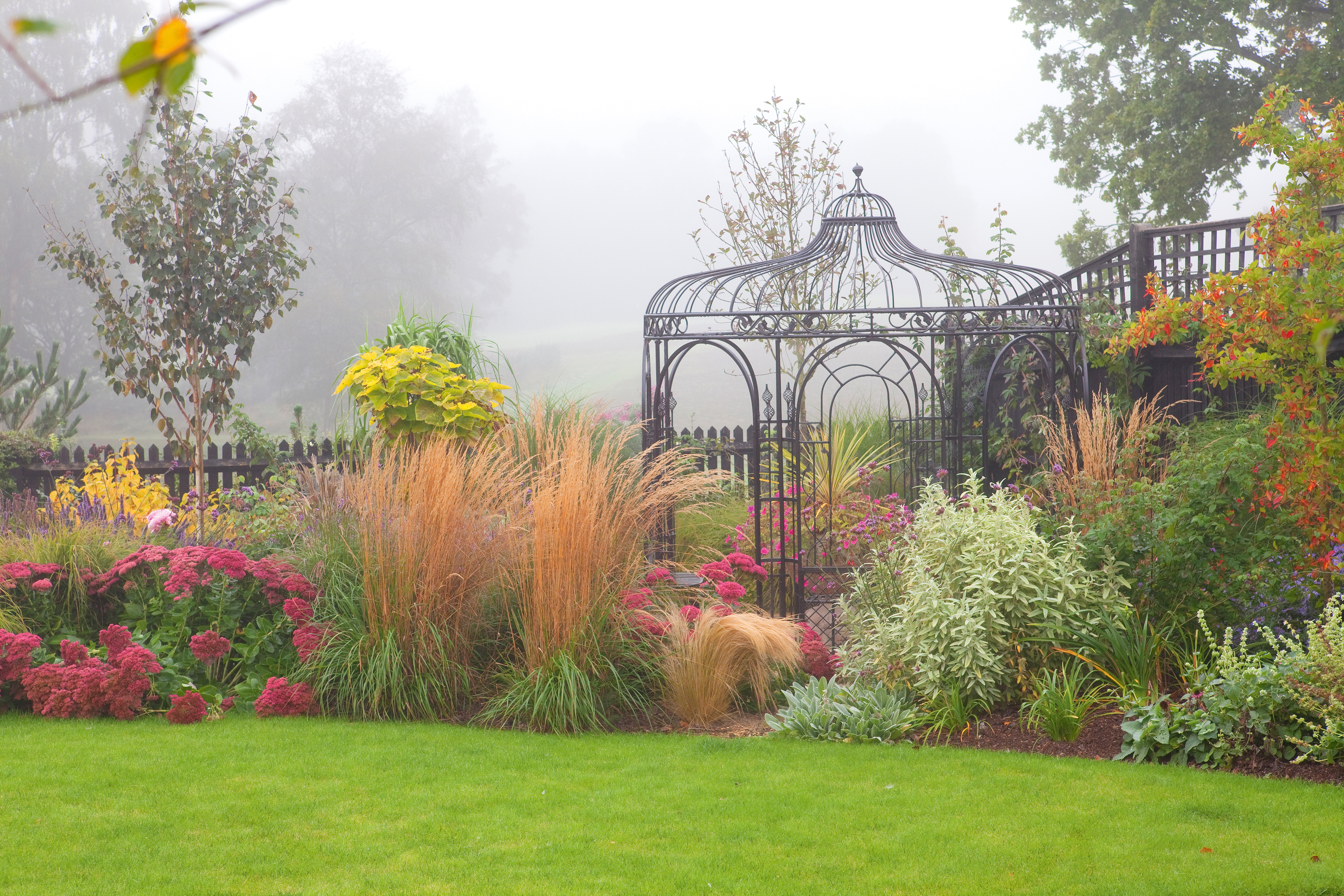
Grasses take on an ethereal quality with their airy movement and muted tones and work particularly well with late-season perennials such as sedum, Hylotelephium spectabile, Verbena bonariensis and varieties of salvias
Garden plants for autumn
Until the first frosts, there is an abundance of bloom from perennials and annuals, especially if you’ve cut back for further flushes earlier in the season and included an array of late-interest autumn plants.
Think of reliable, cold-hardy perennials, such as sedum, persicaria, ceratostigma, asters, Chrysanthemum rubellum types, solidago and monarda. Some garden plants for autumn will tolerate frost and last into winter to keep your garden blooming, including winter jasmine, pansies and snowdrops.
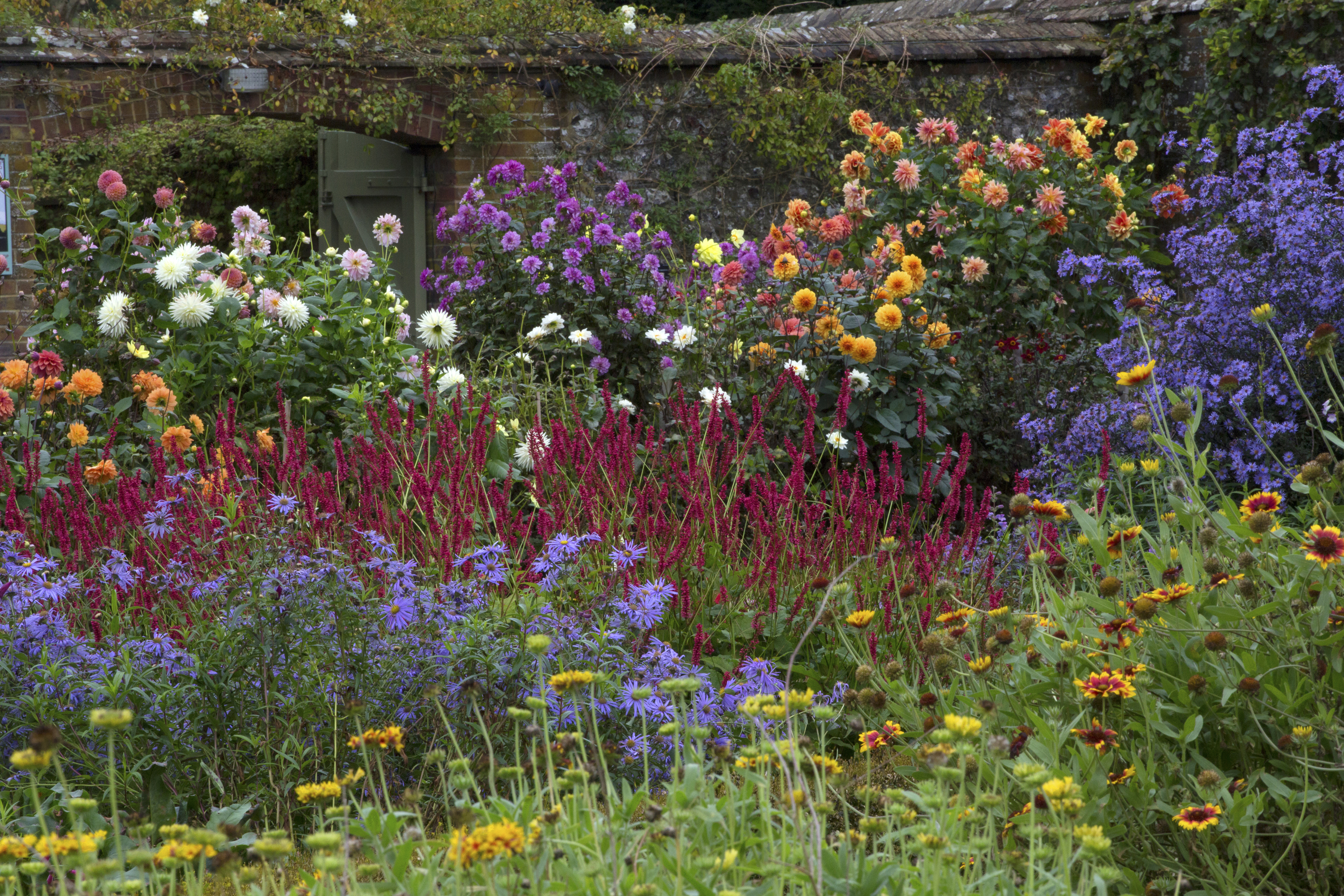
Here the sheer exuberance of colourful dahlias, mixed with Michaelmas daisies, Persicaria amplexicaulis and repeat flowering gaillardia, makes for a stunning late-season autumnal display
A few cold-hardy annuals will also last longer as well: dianthus, calendula, pansies, snapdragons and alyssum. Other flowers may have attractive seedheads that will add a further dimension to your borders, such as echinacea, helenium and rudbeckia, as well as rose hips and feathery ornamental grasses. Towering Stipa gigantea, reliable feather reed grass and Miscanthus sinensis ‘Morning Light’, with its feathery seed heads, are also good choices.
Bulbs to add to the floral medley are autumn crocuses, nerines, sternbergia and cyclamen. Flowering shrubs can also light up the garden, many of which have the added joy of fragrance. Some top choices include abelia, hydrangeas, clerodendrum, daphne, viburnum, lonicera, colletia and sarcococca.
18 of the best autumn plants
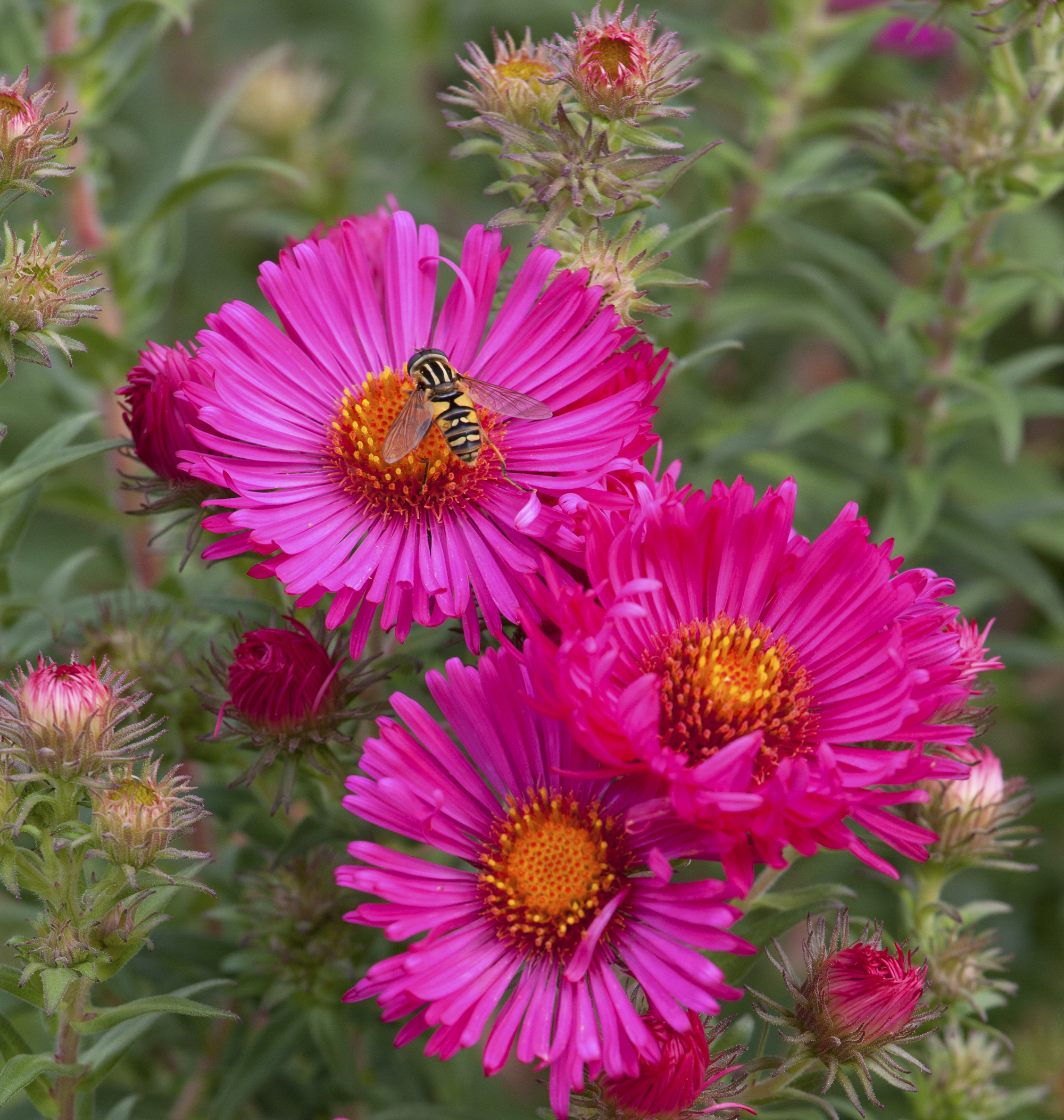
1. Asters now called symphyotrichum, flower from late summer and peak in October. Plant in a sunny, airy position among other late-season perennials
and grasses. Cut back hard after flowering.
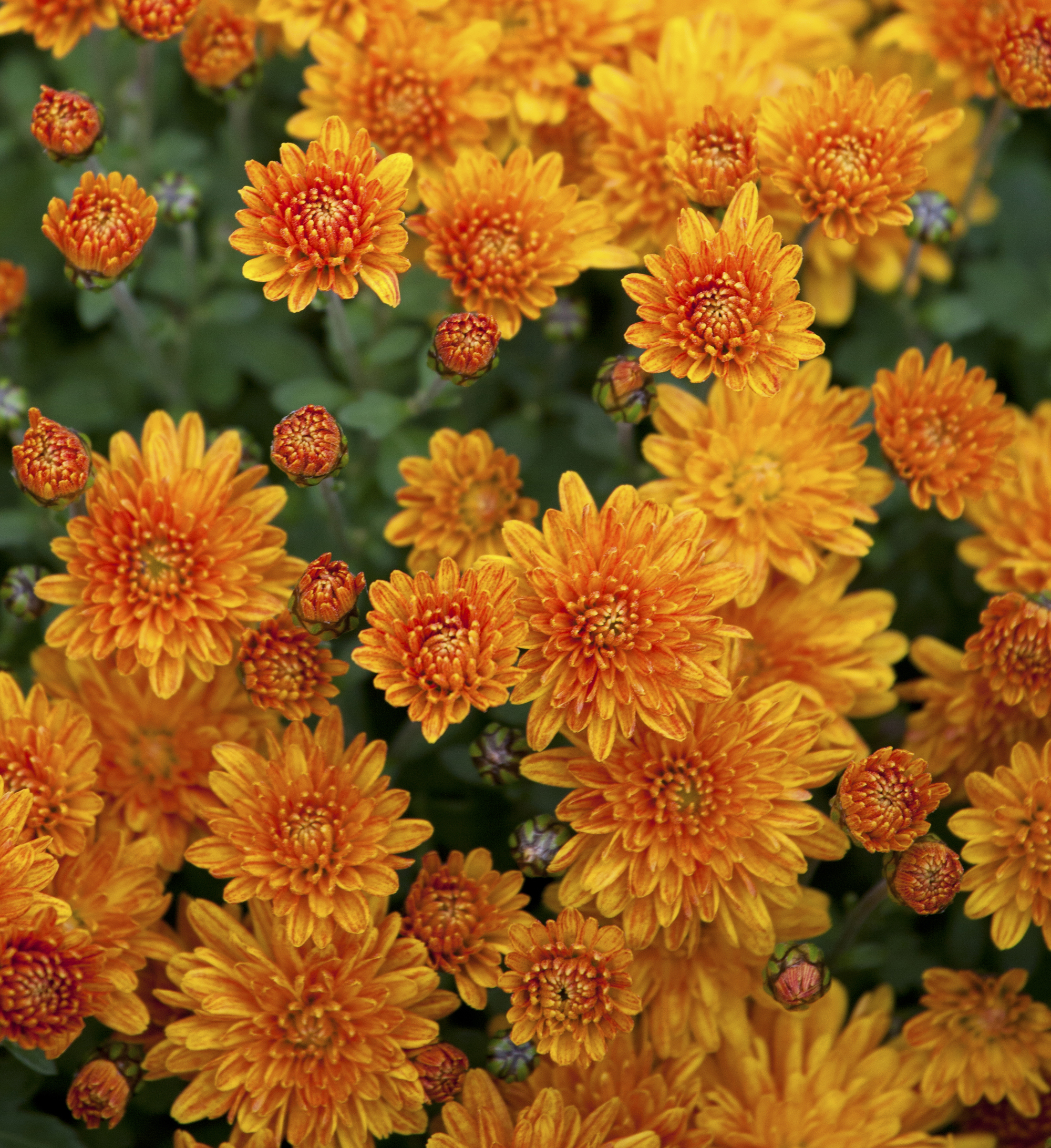
2. Chrysanthemums, the hardy varieties, will keep blooming through November when other flowers fade. Autumnal colours work best in the garden and they are ideal for containers. Grow in open, sunny spots in soil with organic matter added when planting. Cut back to the ground in December.
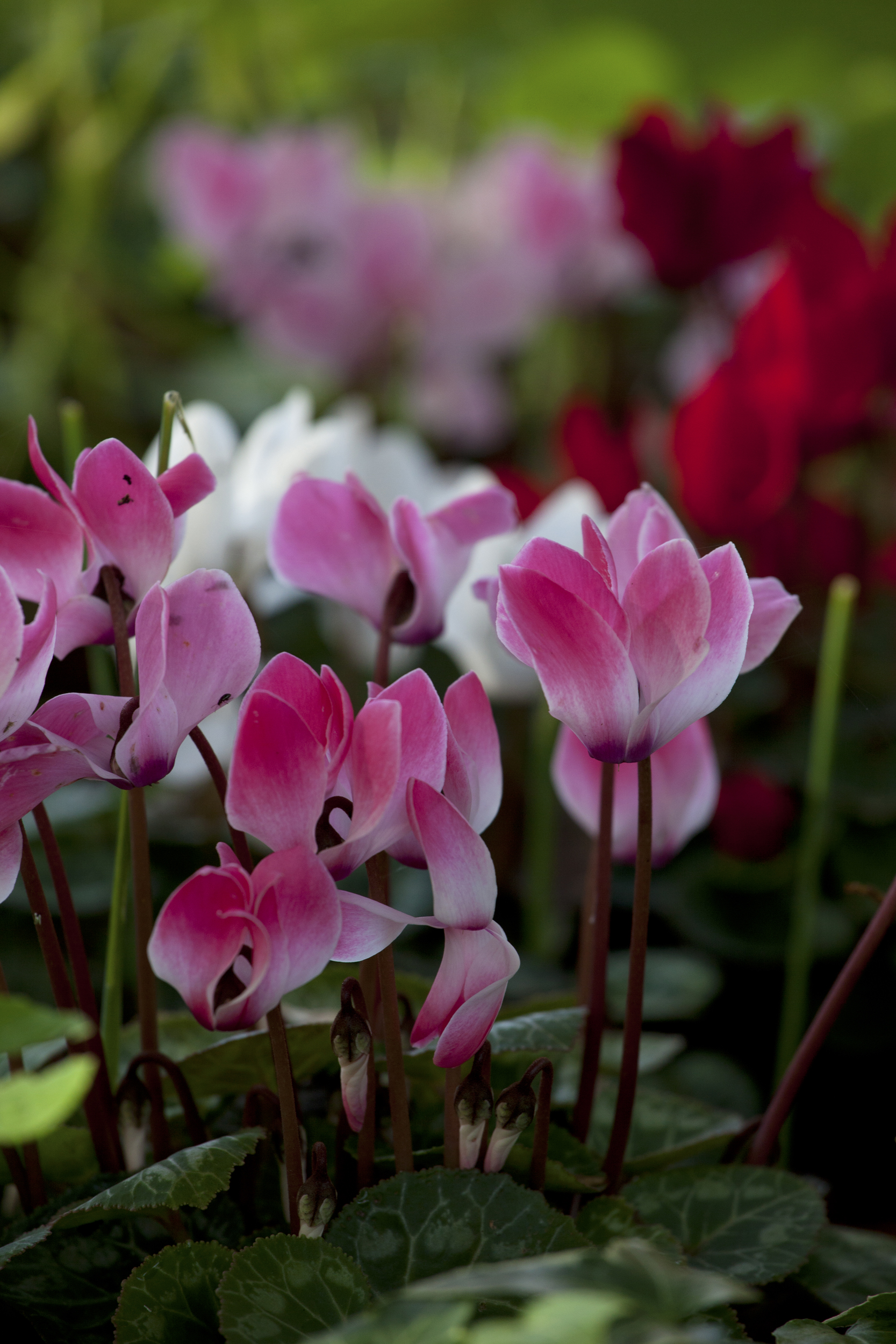
3. Cyclamen hederifolium are hardy tuberous perennials that flower through autumn and winter. Lovely naturalised under trees or on shady banks,
in well-drained, moderately fertile, humus-rich soil.
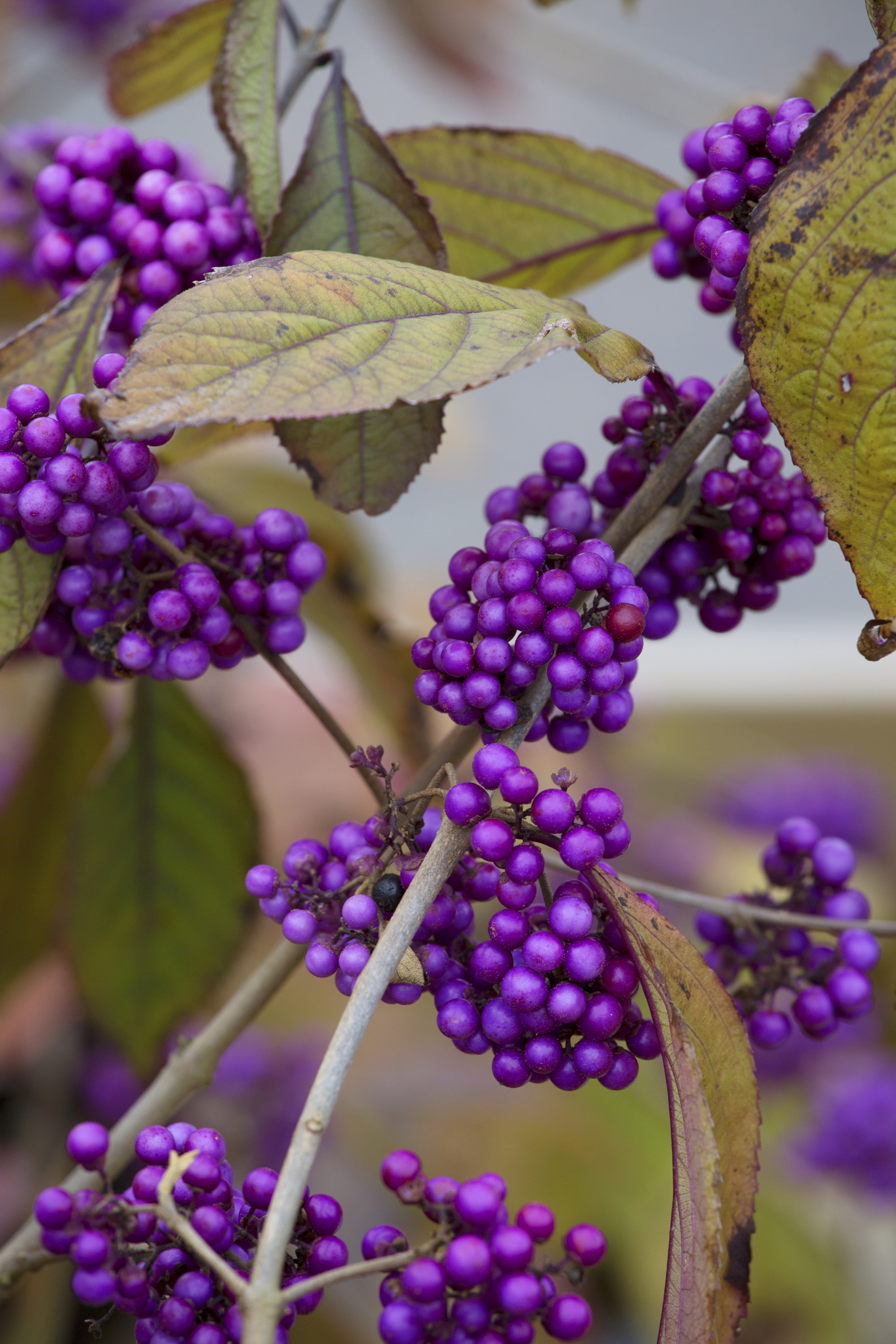
4. Callicarpa bodinieri var. giraldi ‘profusion’, the beauty berry, is a deciduous shrub grown for its clusters of bright purple shiny fruits and tinted autumn leaf colour. They do best in dappled shade in a woodland scene or backdrop in a shrub border, where their jewels can be admired.

5. Cercis canadensis is a small and graceful tree with heart-shaped leaves of burgundy purple that change to orange in autumn. They like full sun to part shade in chalk, sandy, clay or loam soil that is well drained, and are a great choice for a small garden or in a border among late-season perennials

6. Acers are invaluable for their vibrant autumn colour of flaming golds and reds. There is a huge range of varieties for sun or part shade, the more acid the soil and sunnier the aspect the better the colour, but there are ones that are tolerant of most soil types as long as it is fertile. Smaller varieties are lovely in containers. Protect their delicate foliage from strong winds
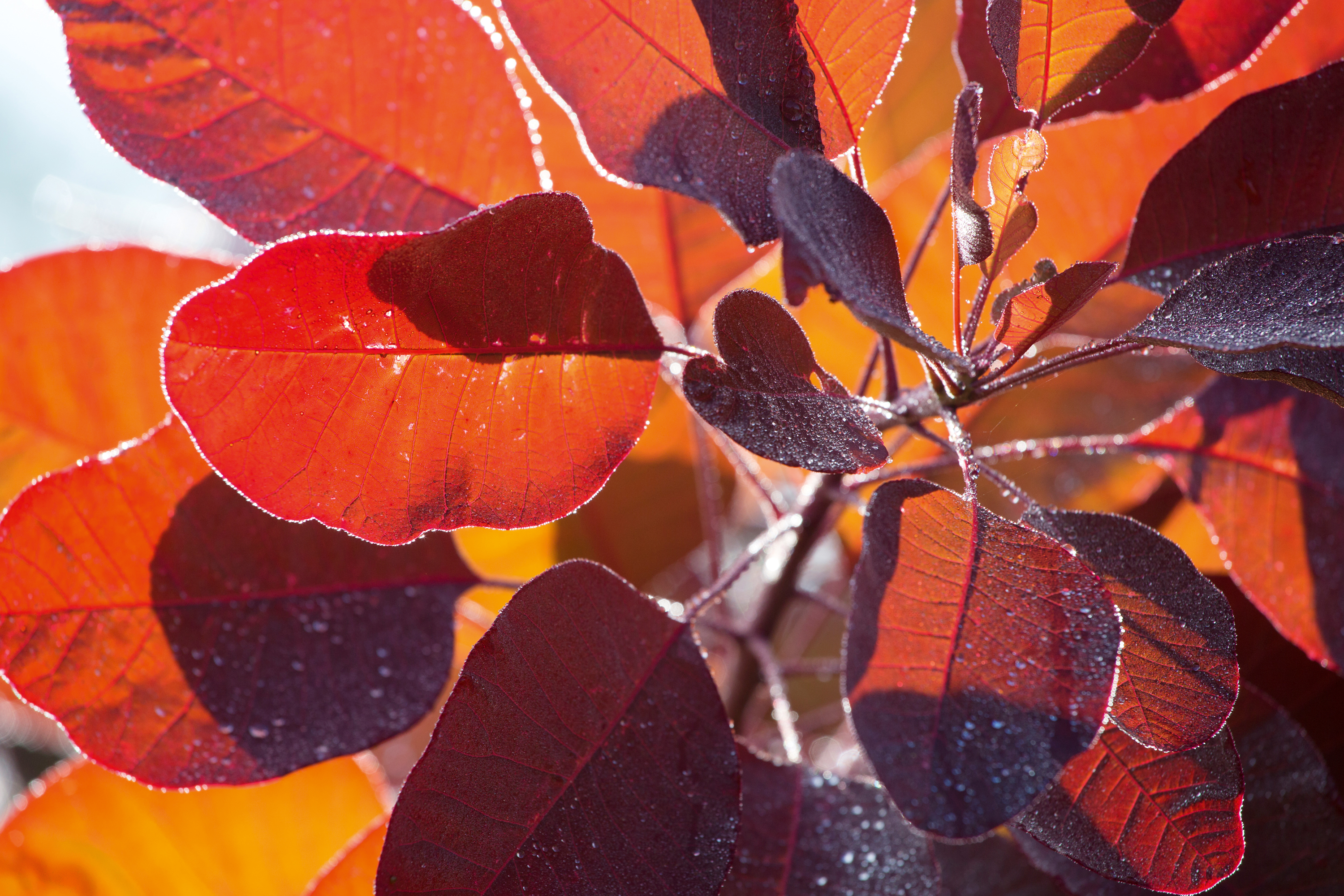
7. Cotinus, known as the smoke bush for its feathery panicles, is a large deciduous shrub or small tree with wine-red foliage that turns to sunset colours. Cotinus need full sun and space to grow, in moderately fertile, moist but well-drained soil, and look lovely paired with blues, pinks and purples of late clematis or salvias.
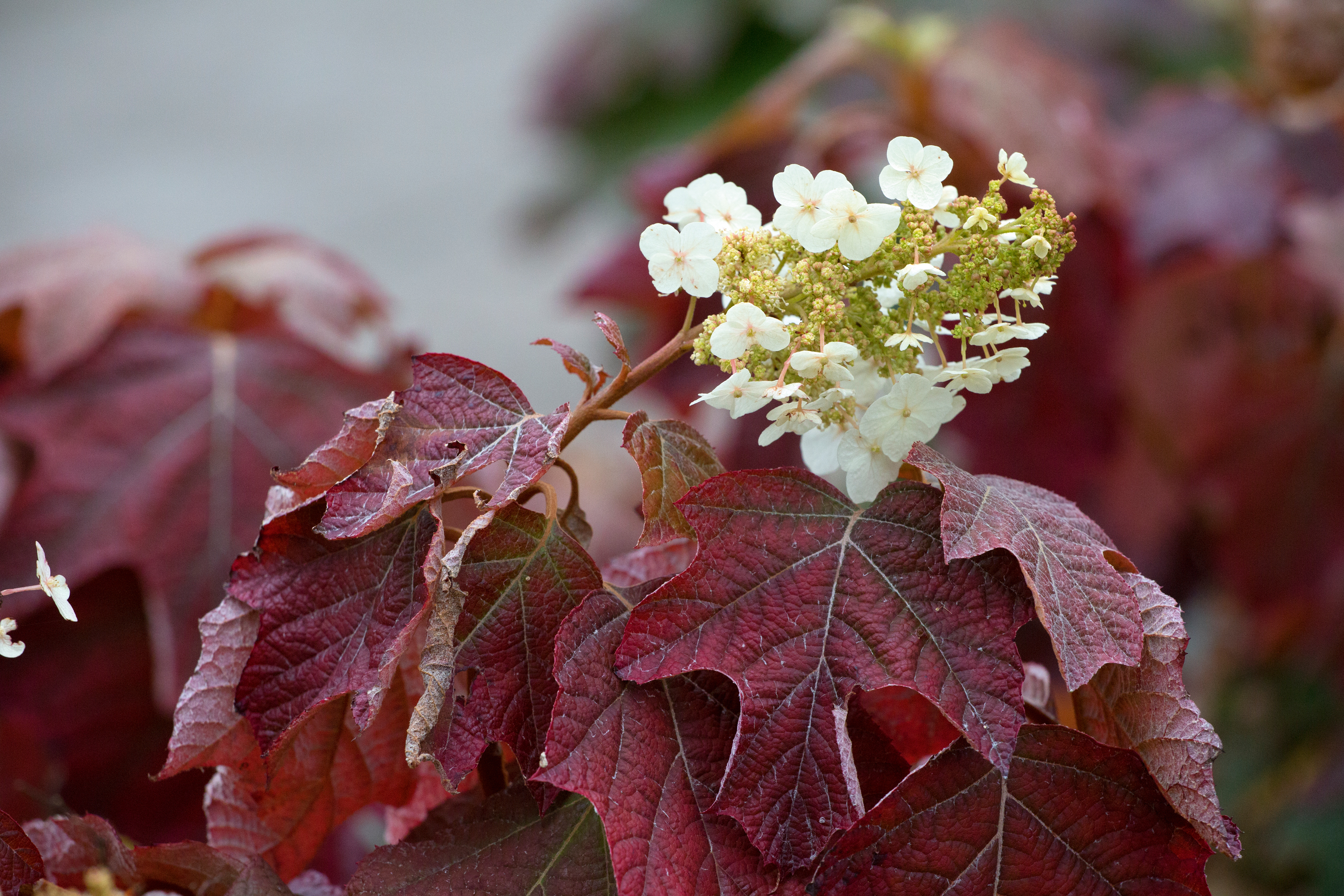
8. Hydrangeas, most notably the deciduous oak-leaved H. quercifolia, can have dramatic autumn foliage with their elegant fading flowers. Grow in moist but well drained soil, in sun or part shade, in borders and beds among other shrubs or perennials, or massed as informal hedging.
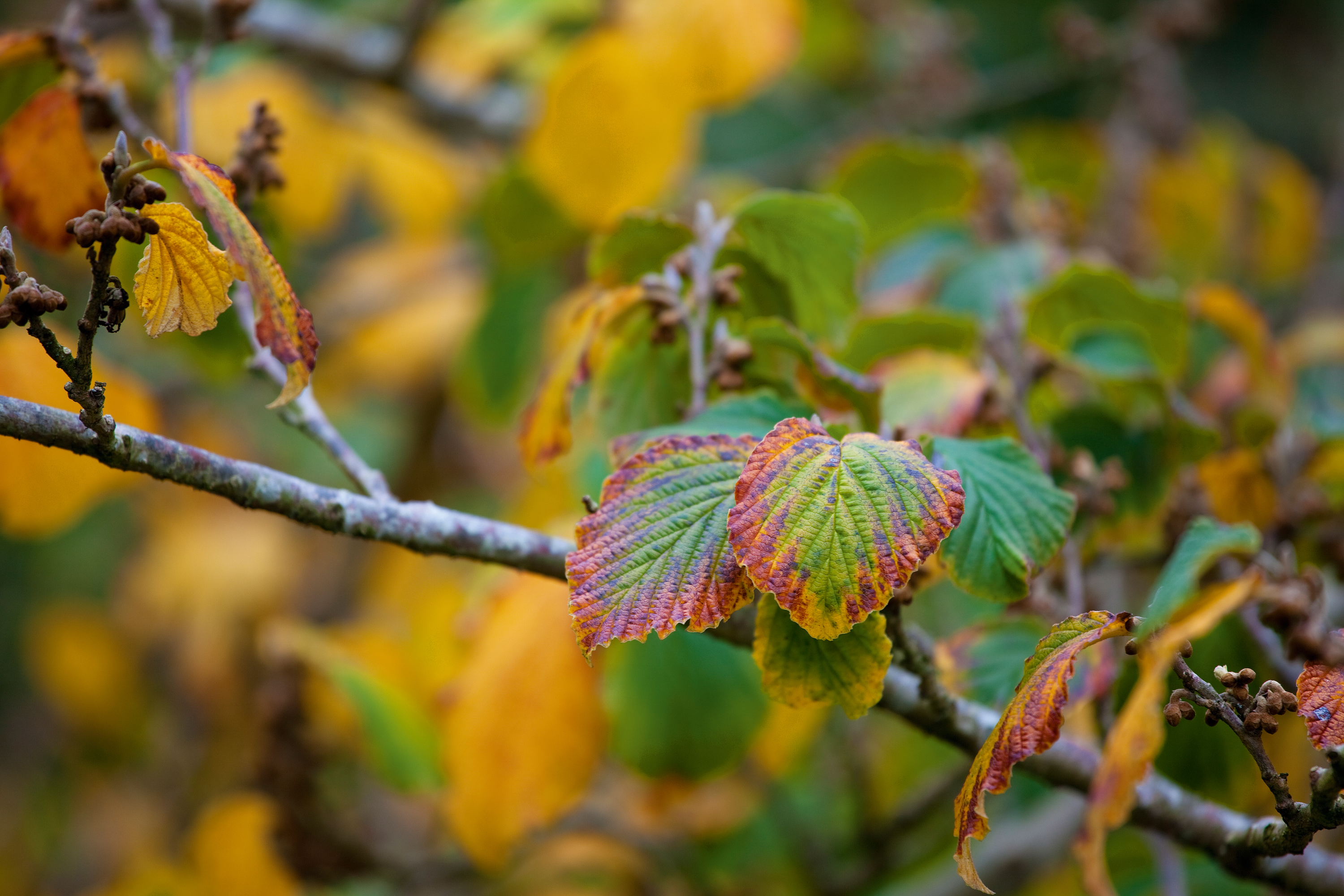
9. Hamamelis shrubs or small trees are known for their autumn hues followed by wonderful spidery, scented flowers in winter. They do best in full sun and are tolerant of acid or alkaline soils. Sufficient moisture is important for flowering; water in dry spells and mulch in late winter. Underplant with hellebores, heather, snowdrops and low-growing tufty grasses.

10. Cornus shrubs are ideal for their late season of interest with autumn foliage and vibrant winter stems. They need moist, acid soils in sun, and pruning every year or two in March to ensure good stem colour. Plant en masse for the best effect, and they work particularly well with the bleached parchment of feathery miscanthus plumes.
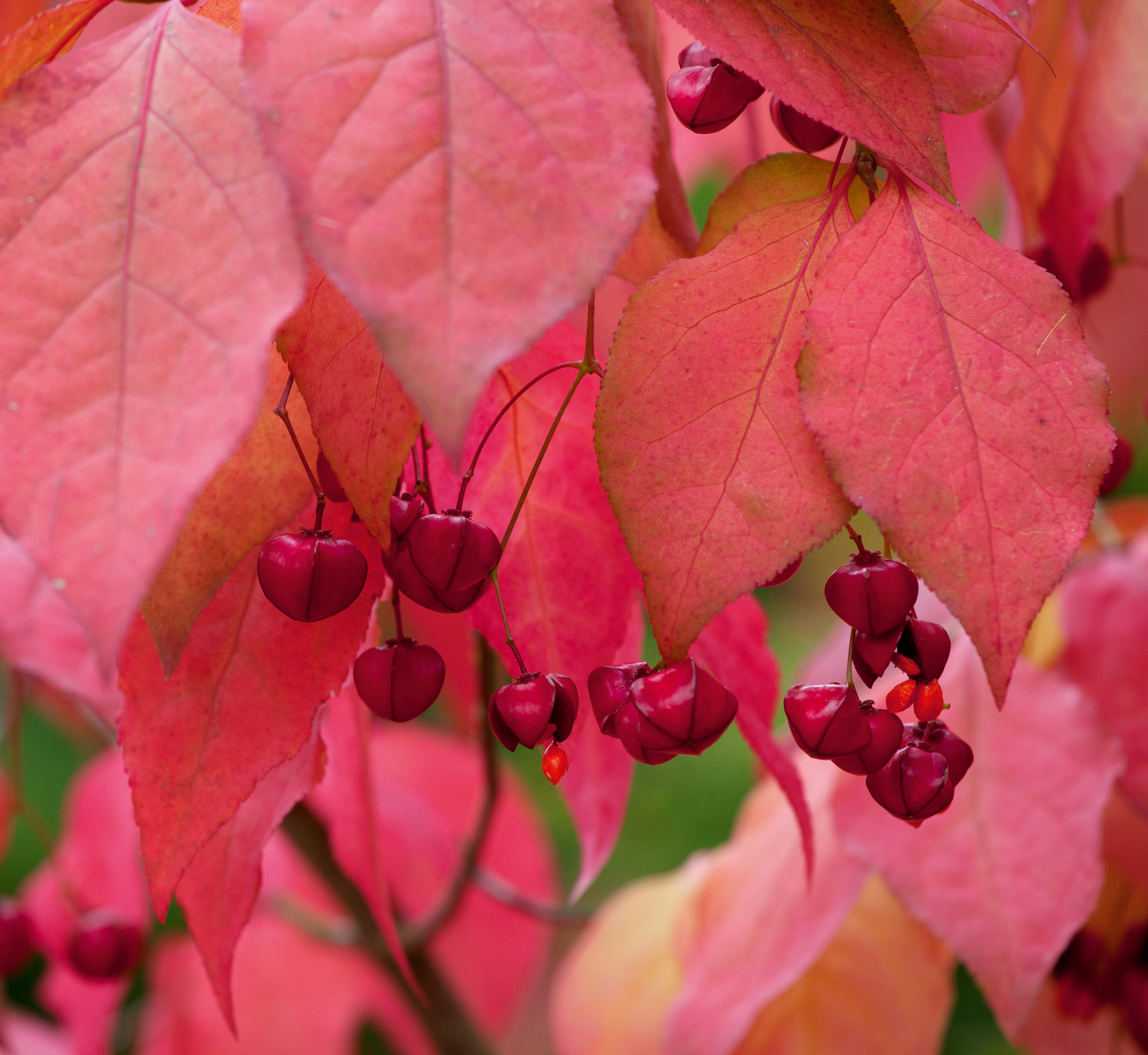
11. Euonymus varieties offer both foliage in brilliant shades of red, and hanging lobed fruits to the autumn garden, and do well in a range of conditions in most soils in sun to part shade. Grow as a specimen shrub, in mixed borders, in a semi-woodland setting, or massed as an informal hedge.
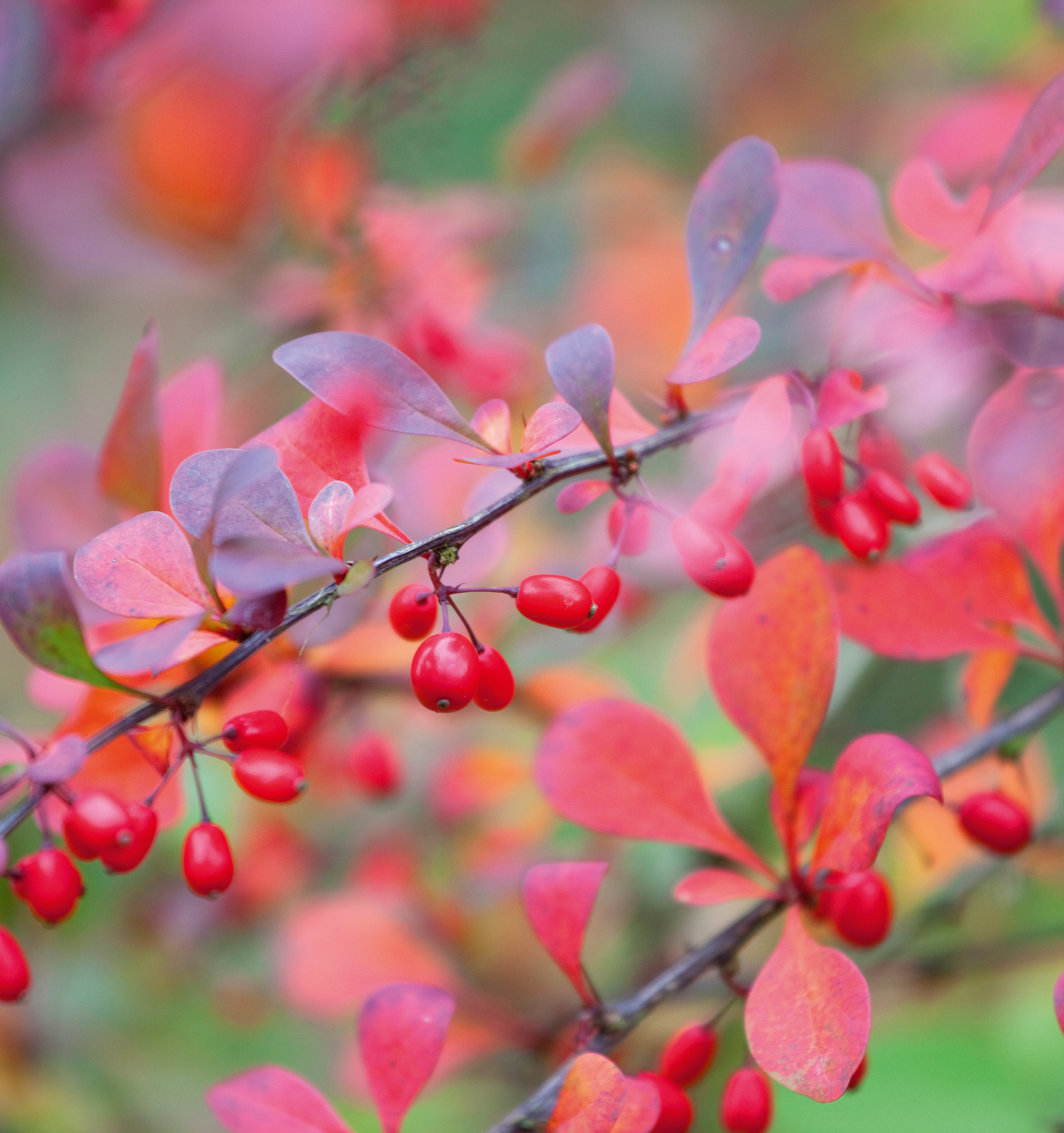
12. Berberis is a tough hardy shrub and comes in a range of sizes and shapes, many with berries that last well into winter. It can be used for screens, hedges and barriers due to its spiny stems. Berberis are happy in a range of soils and sites, and is easy to grow and maintain.
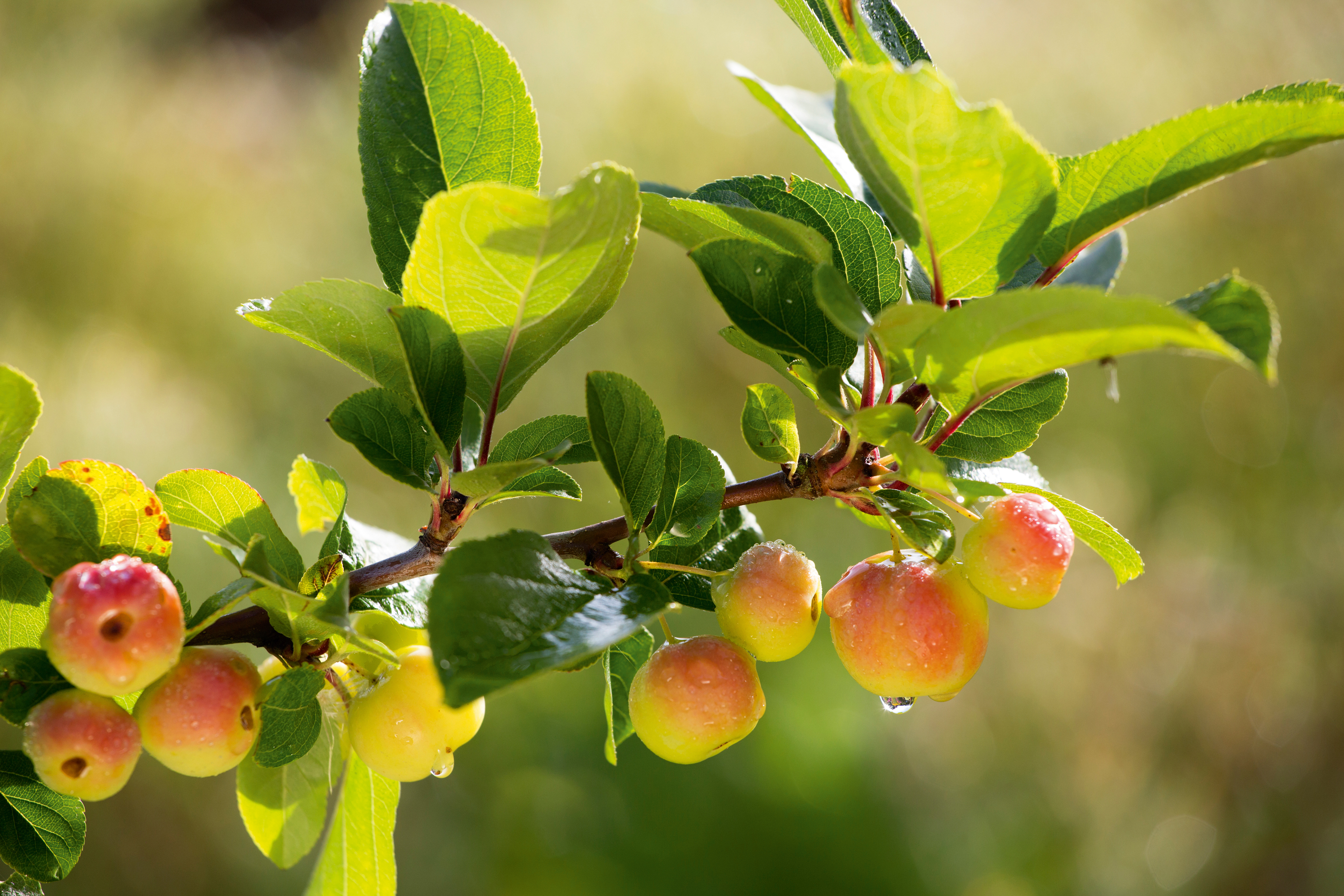
13. Crab apples have probably the best of all the winter fruits, and along with their pretty spring blossom have great versatility due to the range of sizes available. For a larger space you can enjoy the spring flowers and autumn fruit of rows of crab apples, maybe lining a drive or dotted across a lawn. There are, however, also small varieties that are ideal for smaller spaces, courtyards or even containers, such as Malus ‘Red Jade’ or M. toringo subs. sargentii. Birds generally prefer the smaller crab apples.

14. Sorbus trees have eye-catching pendulous clusters of berries in shades of pink, white, orange, yellow and red, as well as autumn foliage. They prefer a fertile, well drained soil in sun or part shade. Use as focal trees or in flowerbeds and wildlife gardens. Remember to water in prolonged dry periods in summer.
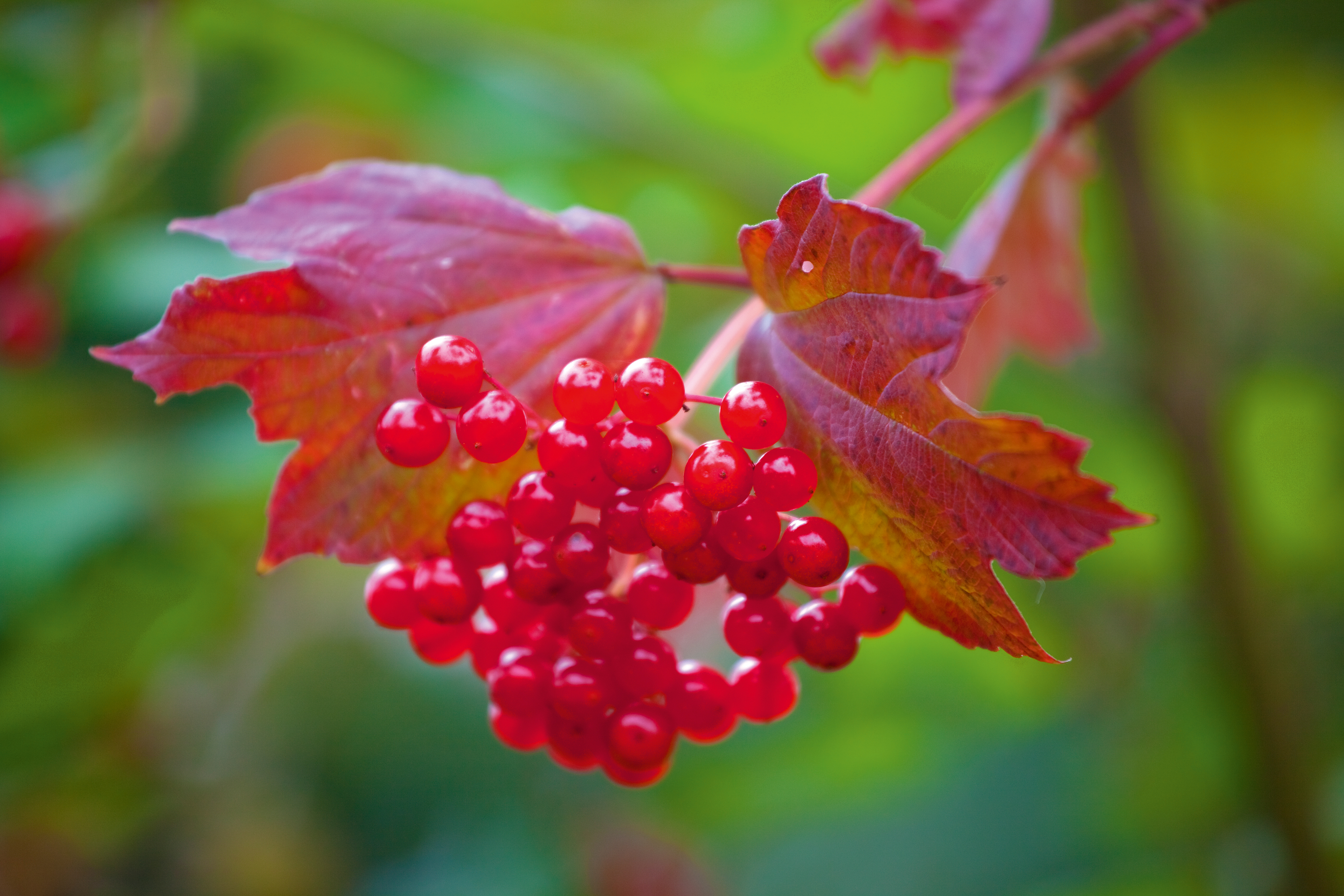
15. Viburnums are graceful shrubs for both autumn foliage colour in pretty tones of pinks and reds, along with their extremely glossy berries. Most prefer full sun in fertile well-draining soil with a cool root run. Ideal in a mixed hedge to attract wildlife.
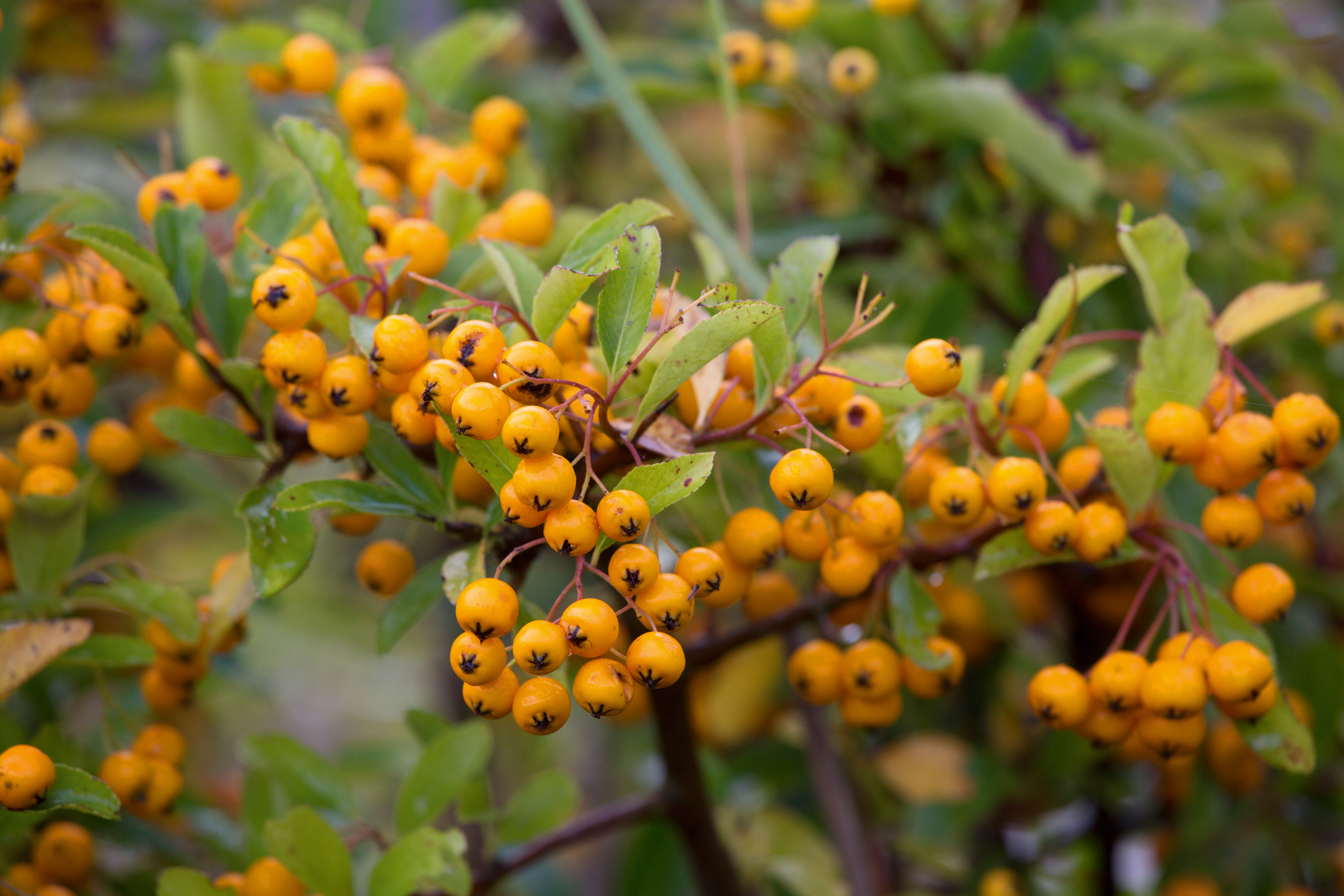
16. Pyracantha has abundantly produced long-lasting and showy orange to red berries. They can be trained as an espalier on a wall. Trim to encourage branching between late winter and spring, and new growth in summer. Suitable for any moderately fertile soil, not prone to waterlogging, in sun or part-shade.
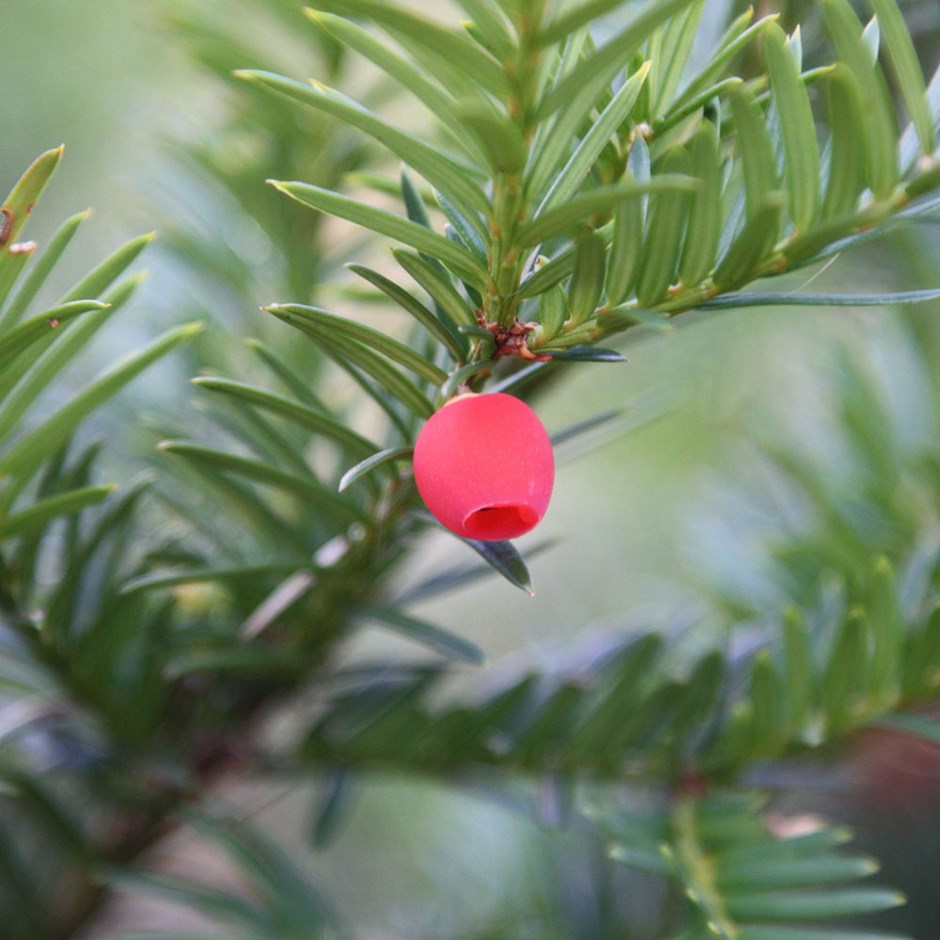
17. Taxus baccata is none other than the native English yew. As it's an evergreen conifer, it provides plenty of interest year-round, but the female plants produce gorgeous red-pink fruits in the autumn (be careful, they are poisonous). A mysterious plant with a long history in folklore, the yew will grow up to 10m tall, or can be shaped into a dense formal hedge.
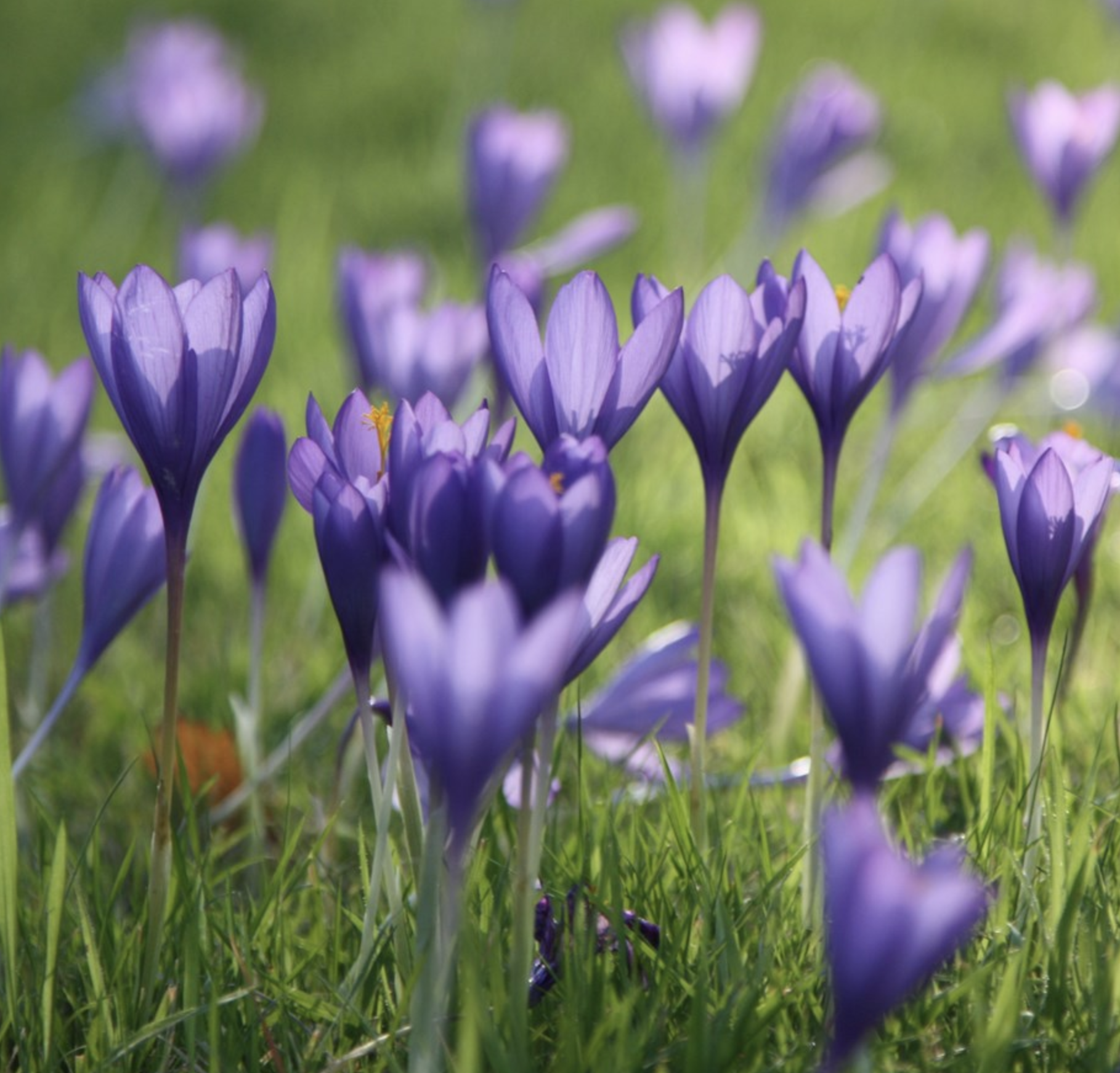
18. Autumn crocus bulbs will bloom between late September and late October, and are excellent hardy plants for adding unusual colour to your autumnal garden. What's really great about them is that even if you've bought yours too late for them to bloom outside this year, you can still enjoy the flowers indoors and then plant them out; they will then bloom next autumn. Choose a sunny spot for your crocuses.